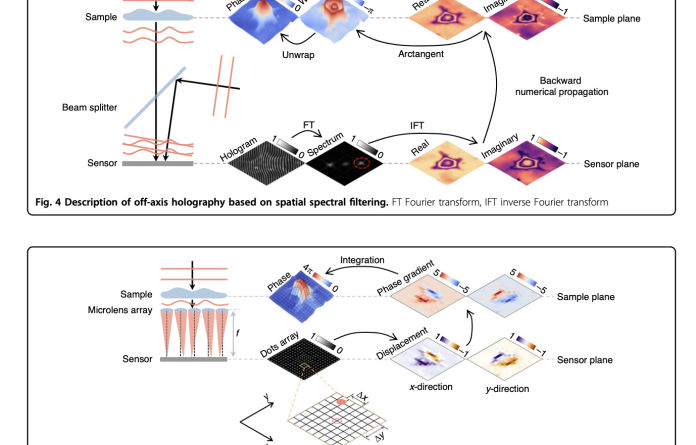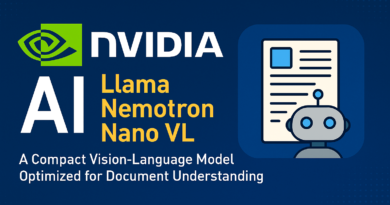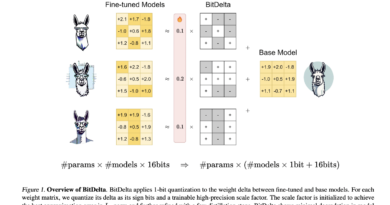Can Deep Learning Revolutionize Phase Recovery? This Review Paper Explores Its Impact and Future in Computational Imaging
Deep learning has emerged as a powerful tool in various fields, revolutionizing the way we solve complex problems. One such field that has seen a significant impact from deep learning is computational imaging, specifically in phase recovery. The ability to accurately recover the phase of light fields has important implications in various applications, including microscopy, holography, and imaging modalities. In this review paper, we will explore the impact of deep learning on phase recovery and discuss its future prospects.
Understanding Phase Recovery and Its Challenges
To comprehend the significance of deep learning in phase recovery, it is essential to understand what phase recovery entails. In the context of light fields, phase recovery refers to the process of calculating the phase from intensity measurements. While traditional optical detectors can easily measure the amplitude of light waves, capturing the phase accurately has proven to be challenging due to limitations in their sampling frequency. This limitation becomes problematic as the phase contains crucial information about the structure of the samples being studied.
Conventionally, various methods such as holography/interferometry, Shack-Hartmann wavefront sensing, transport of intensity equation, and optimization-based methods have been employed for phase recovery. However, these methods often suffer from limitations such as low spatiotemporal resolution and high computational complexity. It is in this context that deep learning techniques have shown promise in revolutionizing phase recovery.
The Role of Deep Learning in Phase Recovery
In a recent review paper published in Light: Science & Applications, researchers from The University of Hong Kong, Northwestern Polytechnical University, The Chinese University of Hong Kong, Guangdong University of Technology, and Massachusetts Institute of Technology explore the impact of deep learning on phase recovery [2]. The paper presents a comprehensive analysis of using deep learning techniques from multiple perspectives.
Pre-Processing Techniques
The first perspective discussed in the review paper focuses on using deep learning for pre-processing intensity measurements before phase recovery. This involves applying techniques such as pixel super-resolution, noise reduction, hologram generation, and autofocusing to improve the quality of input data. By enhancing the quality of the input data, deep learning can significantly improve the results of phase recovery.
Deep-Learning-Post-Processing
The second perspective explores the use of deep learning during the phase recovery process itself. In this approach, neural networks are employed either independently or in conjunction with a physical model. This enables faster and more accurate phase recovery compared to traditional methods. By leveraging the power of deep learning, researchers can overcome the limitations of conventional techniques and achieve remarkable results.
Post-Processing Techniques
The third perspective focuses on utilizing deep learning for post-processing after phase recovery. Techniques such as noise reduction, resolution enhancement, aberration correction, and phase unwrapping can be applied using deep learning algorithms to further improve the accuracy of the recovered phase. These techniques play a crucial role in extracting valuable insights from the recovered phase and understanding the properties and behavior of the sample under investigation.
Applications of Recovered Phase
The fourth perspective explores the use of the recovered phase for various applications, including segmentation, classification, and imaging modality transformation. By utilizing deep learning in conjunction with phase recovery, researchers can gain valuable insights into the samples being studied, leading to advancements in diverse fields.
Advantages and Limitations of Deep Learning in Phase Recovery
Using deep learning for phase recovery offers significant advantages over traditional methods. The enhanced speed, accuracy, and versatility provided by deep learning algorithms enable researchers to tackle complex problems in computational imaging. However, it is important to acknowledge the limitations and potential risks associated with deep learning techniques.
While deep learning methods may appear similar, subtle differences in their implementation can have a significant impact on the results. Researchers suggest combining physical models with deep neural networks to mitigate these risks, especially when the physical model closely aligns with reality. This integration of physical models and deep learning algorithms can enhance the overall accuracy of the phase recovery process.
Future Prospects
As researchers continue to explore the potential of deep learning in phase recovery, the technique’s limitations will likely be addressed. Ongoing advancements in deep learning algorithms, hardware capabilities, and computational power will contribute to further improvements in accuracy and efficiency. By unlocking the full potential of deep learning in phase recovery, computational imaging will witness transformative advancements in understanding complex systems [2].
In conclusion, deep learning has the potential to revolutionize phase recovery in computational imaging. The ability to accurately recover the phase of light fields using deep learning techniques offers advantages over traditional methods, such as improved speed, accuracy, and versatility. While challenges and limitations exist, ongoing research aims to overcome these obstacles and unlock the full potential of deep learning in phase recovery. By doing so, researchers can advance our understanding of complex systems and pave the way for groundbreaking discoveries in various fields of computational imaging.
Check out the Paper. All credit for this research goes to the researchers of this project. Also, don’t forget to follow us on LinkedIn. Do join our active AI community on Discord.




